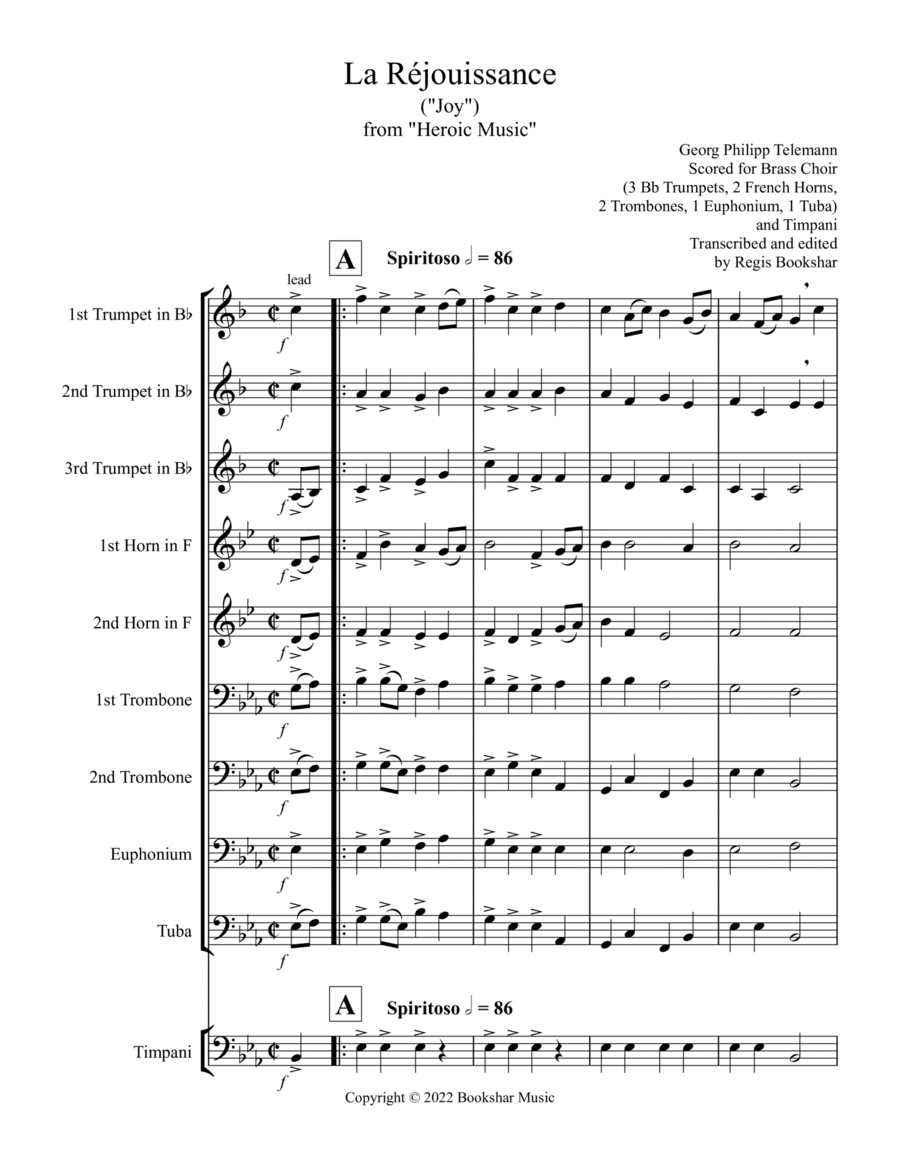Euphonium,Horn,Timpani,Trombone,Trumpet,Tuba - Level 3 - Digital Download SKU: A0.1222494 Composed by Georg Philipp Telemann. Arranged by Regis Bookshar. Baroque,Chamber,Historic,Instructional,March. 18 pages. Regis Bookshar #818759. Published by Regis Bookshar (A0.1222494). La Rejouissance (from Heroic Music) - Georg Philipp Telemann - Brass Choir, Timpani - Intermediate - Digital Download.Heroic Music (or Heldenmusik) is a suite of twelve short marches and processionals, written by Georg Philipp Telemann in 1728, and is associated with various attributes of Heroism such as Dignity, Bravery and Alertness. All twelve movements have now been transcribed and arranged by Regis Bookshat to be played by Trumpet Quintets or Brass Quintets. Some of them have also been arranged for Sextets, Septets, Octets, Nonets and Brass Choirs. Some also include a Timpani. They can be purchased individually, or, if you prefer, as a complete set of all twelve at a huge saving.Any of these selections would be a wonderful addition to any music library. They are perfectly suited to recitals and public performances, can stand alone as short interludes and are generally well received by audiences. They are suitable for high school and college students but professional musicians would also enjoy playing these arrangements.. These selections are some of the many arrangements from The Regis Bookshar Trumpet Ensemble's extensive music library which are being made availabe for the first time. In the past, these compositions have often been performed by a soloist playing on a Piccolo Trumpet, but these new arrangements are Bb Trumpet friendly as one player stated after playing through them, making them much easier for most high school students.This selection, La Rejouissance (from Heroic Music), is arranged for a Brass Choir with parts for 3 Bb Trumpets, 2 French Horns, 2 Trombones, 1 Euphonium and 1 Tuba and a Timpani, and is associated with the heroic quality of Joy. There is also a version without the Timpani, if you would prefer. The parts may be doubled as needed. Included are a score and a complete set of parts (18 pages).Many of these selections are readily available for a wide variety of instrumental ensembles. Please take the time to look for other versions of this composition. You may find something else that may also suit your needs. I would also encourage you to search for other arrangements by Regis Bookshar, as well, as there are numerous selections in a variety of styles, also available for purchase. You may find something else which might interest you. Please continue to check periodically because new arrangements are being added as often as possible. I am certain that these wonderful arrangements of Georg Philipp Telemann's Heroic Music will continue to entertain both performers and audiences alike for years to come.
